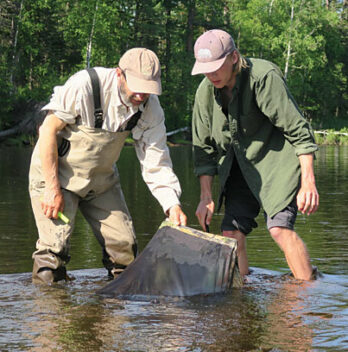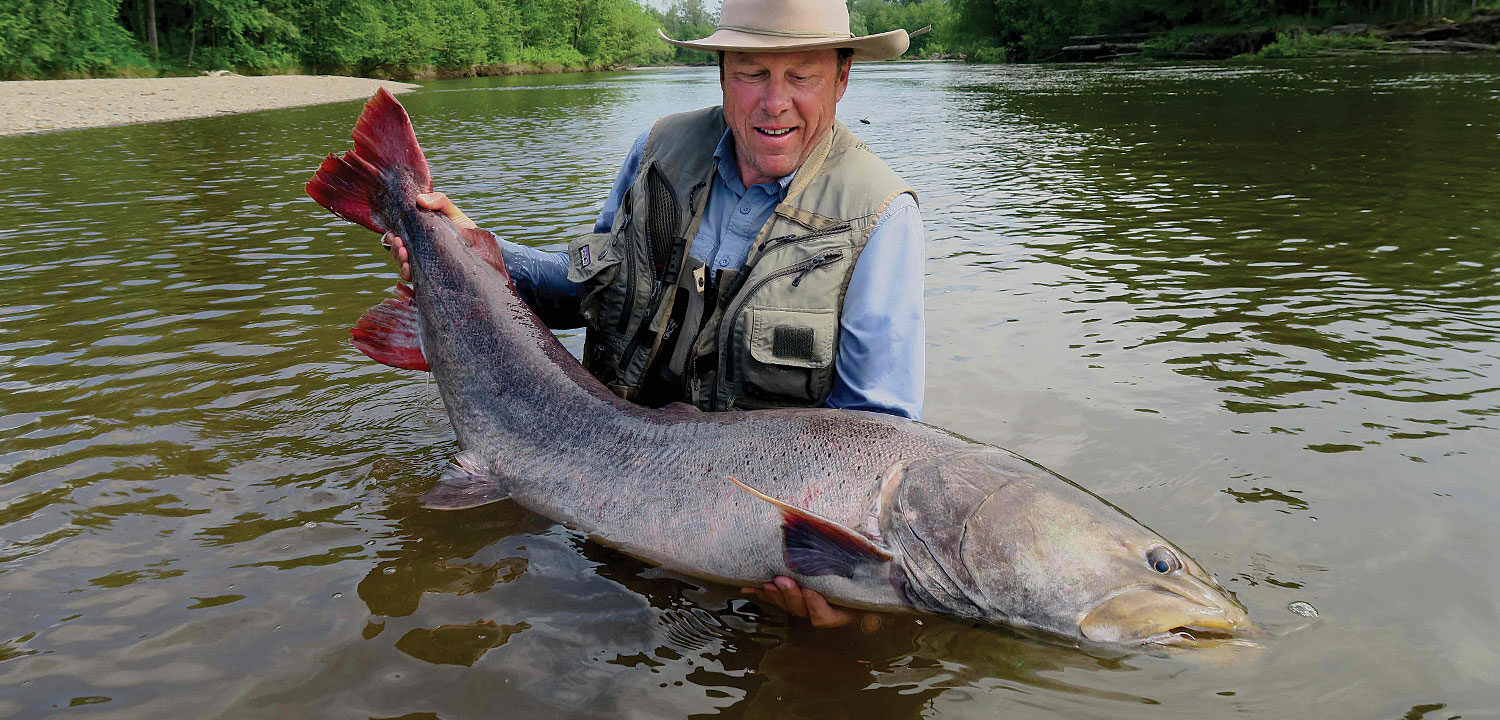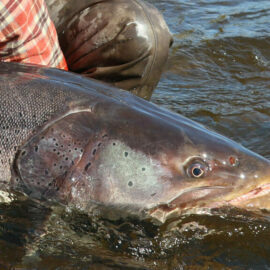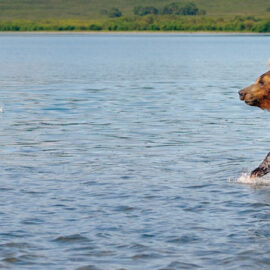On the Tugur River, we chase answers about Russia’s disappearing giant taimen.
By Guido Rahr, President
For more than a decade, we’ve been working in the Russian Far East to protect both Sakhalin taimen and Siberian taimen, the latter a vulnerable Eurasian trout that feed on adult salmon and reach up to 140 pounds. And while we’ve succeeded in protecting some of the most important, pristine Sakhalin and Siberian taimen habitat through protected areas in the Tugur and Koppi rivers, we still don’t know much about the resident taimen there.
How big are the populations in these rivers? What is the life history of these fish – where do they spawn, what is their run timing? Do they migrate to the ocean? What’s the ratio of males to females? What is the effect of increased sportfishing on their population numbers?
These questions need to be answered fast because the long-lived, slow-growing taimen have been declining throughout their range. The International Union for Conservation of Nature (IUCN) estimates that approximately 70% of taimen populations in the Russian Far East have either been extirpated or experienced significant declines. The number of watersheds supporting giant taimen is dwindling due to impacts from mining, damming, road construction, poaching, and climate change. In addition, the dramatic increase in popularity of recreational fishing in the Russian Far East, as well as increasing accessibility to the region’s most remote rivers, are driving unsustainable rates of taimen harvest.
In the Tugur River this June, we renewed the scientific race for answers about Siberian taimen. With the support of Alexander Abramov, a Russian businessman who owns the sport fishing lease on the upper Tugur, we started a population monitoring effort. The project, conceived of by WSC Science Director Dr. Matthew Sloat, led by our longtime Russian colleague Mikhail Skopets, and assisted this summer by my son, Guido Jr., set up a system to photograph and measure each taimen caught by sportfishermen in the Tugur. The data will be entered into a database and computer program called WildID, a new pattern recognition software that will use the unique spotting system of each taimen to develop an understanding of the Tugur river taimen population size and the growth and movements of individual fish over time. It’s believed to be the first time this recognition system will be used on salmon or trout populations.

From now on, all taimen caught and released on the Tugur and its tributaries will be added to the visual database.
We also took invertebrate samples in the Tugur this summer. And we took genetic information from taimen and grayling to look at the contribution of marine nutrients to the watershed. All this will help us build a richer picture of the river’s natural history.
Meanwhile, Dr. Sloat is analyzing years of scale samples gathered in the Tugur by other scientists to determine the sex ratio of taimen in the river. Information on the proportion of mature fish that are female is critical for understanding taimen population structure and their ability to reproduce, their vulnerability to harvest by sportfishermen, and the best approaches to taimen conservation.
To address sportfishing impacts on taimen, Wild Salmon Center is already working with Abramov to introduce low-impact fly fishing on the Tugur. Many of the important stretches of the Tugur were protected in 2014 with the establishment of the 197,000-acre Tugursky Nature Preserve, and Ambramov has also successfully reduced poaching of chum salmon ̶ a taimen food source ̶ and stopped mining and commercial logging in the rest of the watershed.
As we get a fuller picture of how the Tugur taimen population behaves and its true status, we can better direct our conservation in the immediate area – focusing on poaching hotspots and spawning areas.
We already know that the neighboring Nimelen watershed, also a taimen stronghold, is under threat from poaching. Our partners at Khabavorsk Wildlife Foundation are working with regional authorities to establish a protected area in key headwaters habitat on that river within the next year.




